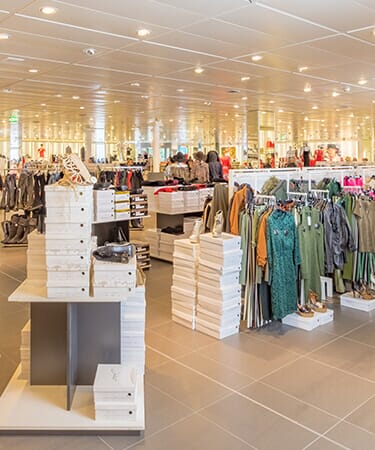Expect to see smartphones, in-store displays, voice assistants and augmented/virtual reality used to close a sale.
It turns out that the customer personalisation ideas presented in 2002’s sci-fi blockbuster Minority Report aren’t far from reality. In the very near future, customer data, behaviour and derived intent will no longer be warehoused and forgotten. Instead, data flow will be ‘always on’ at the point of purchase – and throughout the measured lifetime of a customer.
Over the next five years, retailers need to double down on accessibility, omnichannel measurement and personalised experiences to efficiently build affinity and sales.
Four trends to expect in retail
1. The new cornerstone of store visits? Accessible product information.
Expect to see smartphones, in-store displays, voice assistants and augmented/virtual reality used to close a sale. AI can help retailers show customers more matching accessories and associated parts, additional imagery and videos, and product information – all with the goal of increasing store close rates and basket size. What’s more, virtual assistants helping big box retailers improve wayfinding isn’t far off. And neither is the ability to sell placements to manufacturers for promoted content on the virtual shelf.
2. Instant gratification and convenience will ramp up
Especially for millennials. The race for same day delivery (and convenient returns) must become a focus for retailers in order to compete with e-commerce giants such as Amazon (arriving on our fair shores this September!). Customers will expect exactly what they want – when and where they want it. Retailers need to be nimble.
3. Local inventory and pricing feeds will be used to drive customer demand
Customer visibility into real-time pricing, inventory levels, size availability, new arrivals and discounts is around the corner. There will be personalisation of presented data based on a customer’s history, preference filters and bots. Additionally, home-based virtual assistants will connect with visual displays. With enhanced pre-shopping data and media, shopping trips will become more efficient resulting in loyalty to data-savvy brands. Further, there will be an opportunity to differentiate your brand through technology usage, especially to earn that prideful millennial purchase.
4. Centralisation of customer data will improve measurement and targeting of media and marketing
Leading retailers are already focused on customer lifetime value, omnichannel measurement and cross-channel integration vs. a single sale/click ROI. Measurement technology including in-store beacons, geo-location data (i.e. store visit rates), eye/movement tracking, and facial recognition through in-store signage and cameras will validate and improve methodologies. Device or geographic algorithms should be layered on top of other strategies – such as different bidding or messaging for someone on a mobile phone five kilometres from a store vs. a desktop 20 kilometres away.
Concluding thoughts
In the future, innovative brands will adjust prices to increase the visit frequency of customers looking for the optimal time to visit, using real-time local inventory feeds and store traffic counts along with addressable media channels to immediately price items with different rates for certain customer segments. There will be a shift to local specialisation and customisation while online retailers battle on price for more commoditised products. Digital media will enhance these points of differentiation and unique selection while reducing ad budgets for more commoditised goods to maintain margins.
Overall, successful retailers will embrace technology to centralise data/systems as well as establish rigorous internally-focused education and change management initiatives to help traditional stakeholders understand and believe in the influence of this new omnichannel paradigm and not overlook internal campaign needs. Crucial to distinguishing brand experiences in the hearts and minds of customers? Partnering with the most innovative media and technology companies and knowing exactly how you plan to navigate this inevitable sea of retail change.




